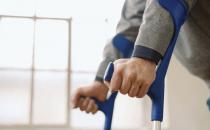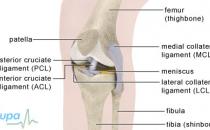Rotator cuff injury

A rotator cuff injury is inflammation of, or damage to, the muscles and tendons in the shoulder.
About rotator cuff injuries
Symptoms of rotator cuff injuries
Causes of rotator cuff injuries
Diagnosis of rotator cuff injuries
Treatment of rotator cuff injuries
About rotator cuff injuries
Shoulder pain affects around one in five people in the UK and a rotator cuff injury is the most common cause.
Your shoulder joint is a ball and socket joint, formed by the ball-shaped end of your upper arm bone (humerus) and a shallow socket on the edge of your shoulder blade (scapula).
Your rotator cuff is made up of a group of four muscles (the subscapularis, supraspinatus, infraspinatus and teres minor) and their tendons. It plays a crucial role in keeping your shoulder joint stable. Tendons wrap around your shoulder joint, forming a cuff around the ball of your humerus.
On top of your shoulder joint is a bone called the acromion. In the gap between your shoulder joint and acromion is a space that some of your rotator cuff tendons run through. In this space is a fluid-filled pad called the subacromial bursa, which cushions your tendons.
Rotator cuff injury is a general term to describe inflammation (soreness and swelling) or damage to one or more of the muscles or tendons that make up your rotator cuff.
Types of rotator cuff injury
There are a number of conditions that can affect your rotator cuff. The most common are inflammation of your rotator cuff tendons and tearing of your muscles or tendons.
-
Rotator cuff tendonitis
If the tendons of your rotator cuff become inflamed, this is known as tendonitis. The tendons can become pinched against one of the other structures that make up your shoulder joint. This can be both the cause and the result of tendonitis. Tendonitis most often affects the tendons that run underneath your acromion. When a tendon becomes trapped or squeezed, it's known as impingement syndrome.Calcium is sometimes deposited in your rotator cuff tendons if they are inflamed for a long period of time. The tendons become 'calcified' and this is called calcific tendonitis.
Your subacromial bursa can also become inflamed - this is called bursitis.
-
Rotator cuff tear
This is when one or more of the muscles and tendons that make up your rotator cuff become completely or partially torn. It may be a result of trauma, such as a fall, or due to tiny tears in the tendon caused by use and wear over time. It may also be caused by impingement syndrome.
Symptoms of rotator cuff injuries
Symptoms of a rotator cuff injury include:
- pain and tenderness in your shoulder (this may extend down your arm too), particularly when you raise your arm out to the side, reach behind you or lift or pull a heavy weight
- pain at night, particularly when you sleep on the affected side
- a feeling of weakness in your shoulder
- being unable to move your shoulder as you usually would
Depending on the type of injury you have, the pain may come on gradually (common if you have tendonitis) or you may have sudden twinges of pain (common if you have a tear).
If you have any of these symptoms, contact your GP or a physiotherapist (a health professional who specialises in maintaining and improving movement and mobility).
Causes of rotator cuff injuries
Rotator cuff injuries may occur for a specific reason, for example:
- lifting or pulling an object that is too heavy for you or lifting it in the wrong way can cause you to strain or tear a rotator cuff tendon or muscle
- landing on an outstretched hand to break a fall can tear or strain a rotator cuff muscle or tendon
There are some things that increase the likelihood of you getting a rotator cuff injury, including the following.
- Age - if you’re over 40, you’re at an increased risk of rotator cuff injuries because your tendons start to wear down with age and become more prone to injury.
- Certain sports, activities and jobs - you’re more likely to have a rotator cuff injury if you do something that involves repetitive overhead motions with your arms. Examples include swimming, weight lifting, playing racquet sports and occupations such as painting, decorating or window cleaning.
Musculoskeletal diseases, such as rheumatoid arthritis, can cause your rotator cuff muscles to become weaker making an injury more likely.
Diagnosis of rotator cuff injuries
Your GP or physiotherapist will ask about your symptoms and examine you. He or she may ask about your medical history and any activities that may be causing your condition.
You may be referred for further tests such as an MRI scan, ultrasound scan or X-ray so that your doctor can look at your shoulder in more detail.
Treatment of rotator cuff injuries
Treatment of a rotator cuff injury depends on the type of injury you have and how severe it is.
Self-help
The following measures may help.
- Rest your shoulder initially, avoiding any movements that cause you pain. Start to do gentle movements as soon as possible to prevent any stiffness in your shoulder.
- Apply an ice pack or ice wrapped in a towel to your shoulder to reduce swelling and bruising. Don’t apply ice directly to your skin as it can damage your skin. Don’t use ice if you have a skin disorder that makes your skin sensitive. Also, don't put ice on your left shoulder if you have any known heart problems.
- Take an over-the-counter anti-inflammatory medicine, such as ibuprofen, to reduce pain and inflammation. Always read the patient information leaflet that comes with your medicine and if you have any questions ask your pharmacist for advice.
Non-surgical treatments
Stretches and strengthening exercises can help build up strength and flexibility in your shoulder. It's important to get advice from a medical professional, such as a physiotherapist, on which exercises and stretches you should do and how to do them correctly. The exercises will be tailored to your specific injury.
If you have rotator cuff tendonitis, your doctor may recommend an injection of a medicine called a corticosteroid. This is usually only done when other treatments haven't helped.
You may be able to have extracorporeal shock wave lithotripsy (ESWT) if you have calcific tendonitis. ESWT uses vibrations caused by sound waves to break up the calcium deposits.
Surgery
Rotator cuff injuries can usually be successfully treated without the need for surgery. However, sometimes you may need to have an operation, for example to repair a tear in your rotator cuff or to remove calcium deposits.
Rotator cuff repair surgery is done under general anaesthesia. This means you will be asleep during the operation.
In general, there are two different procedures that may be used to repair a rotator cuff injury: open surgery and shoulder arthroscopy. The type of surgery you have will depend on where your injury is, and if it’s a tear, how big it is and it’s shape.
Open surgery means that your surgeon makes a cut in the skin over your shoulder and repairs your injury through the cut. In an athroscopy, a narrow, flexible, tube-like telescopic camera called an arthroscope is inserted through a small incision in your shoulder and this is used to repair your injury. It’s commonly known as keyhole surgery.
If you have a rotator cuff tear, the two sides of your muscle or tendon will be stitched back together and, if necessary, attached back on to your humerus. Your surgeon may also carry out a procedure called debridement. This means that he or she will remove any damaged tissue, so that the remaining healthy tissue can heal.
If you have impingement syndrome, your surgeon will remove excess bone from the front part of your acromion. This will create more room for your rotator cuff and prevent pinching of the rotator cuff, when you move your arm above your head. This procedure is called subacromial decompression.
Your surgeon will be able to give you advice on which type of surgery you need for your condition.
Answers to questions about rotator cuff injuries
This section contains answers to common questions about this topic. Questions have been suggested by health professionals, website feedback and requests via email.
How do I know when I'm fully recovered from my injury?
Am I more likely to dislocate my shoulder if I have rotator cuff injury?
Do corticosteroids have any side-effects?
If I don't have a rotator cuff injury, what other conditions may be causing my shoulder to be painful?
How can I help to speed my recovery from rotator cuff repair surgery?
How do I know when I'm fully recovered from my injury?
If you no longer have any pain in your shoulder, it’s often a good indication that your shoulder has recovered, but you may wish to seek advice from your GP or a physiotherapist.
Explanation
When you have recovered from your injury, you shouldn’t have any pain in your shoulder, especially when you reach behind your back, reach overhead, or push or pull a load of a similar weight to what you were able to move before you had the injury.
The time your shoulder takes to heal will depend on what caused the injury and other factors, such as your age and general health.
Am I more likely to dislocate my shoulder if I have rotator cuff injury?
No, not necessarily.
Explanation
Some people dislocate their shoulder as a result of an imbalance in the strength of the different muscles around their shoulder joint. However, although a rotator cuff injury weakens the muscles that protect your shoulder, the majority of dislocations happen as a result of trauma, such as a fall.
Do corticosteroids have any side-effects?
Yes, corticosteroids can have some side-effects.
Explanation
Your doctor may give you an injection of a medicine called a corticosteroid as a treatment for your rotator cuff injury. This will usually be given as an injection into your shoulder. Side-effects are few but corticosteroid injections can sometimes cause:
- an infection
- a tendon to tear
- shrinking or wasting of your shoulder tissues
- an area of redness at the site of the injection
- a loss of colour in the skin near the site of the injection
- a flushed (red) face and neck
If you’re concerned about the side-effects of corticosteroids, speak to you doctor.
If I don't have a rotator cuff injury, what other conditions may be causing my shoulder to be painful?
Rotator cuff injuries are by far the most common cause of shoulder pain, but other conditions can also cause pain in your shoulder. These include frozen shoulder, dislocation, a fracture or arthritis.
Explanation
Conditions other than a rotator cuff injury that can cause pain in your shoulder include the following.
- A frozen shoulder, which, as the name suggests, causes your shoulder joint to become stiff and painful, making movement difficult. It's more common if you’re over 40.
- A fracture is a partial crack or full break of a bone. It's usually a result of impact directly onto your shoulder and is very painful.
- Arthritis is a degenerative condition that not only affects your bones but can affect the surrounding muscles and tendons too. Arthritis may cause pain and a decrease in the mobility of your shoulder.
- Dislocation occurs when the ball of your humerus (upper arm bone) comes out of your ball and socket shoulder joint. It’s usually the result of impact or twisting of your arm.
How can I help to speed my recovery from rotator cuff repair surgery?
It’s important to do a programme of daily stretching and strengthening exercises to help your shoulder to recover.
Explanation
After your operation, your surgeon will refer you to a physiotherapist. He or she will give you a programme of exercises to do to help you regain use of your shoulder. You will usually need to do shoulder exercises for about six weeks.
It’s important to do the exercises as instructed by your physiotherapist to achieve a good outcome after your surgery. It may take several months for your shoulder to completely recover and you will probably be able to get back to your normal activities after about six months.
Further information
The Chartered Society of Physiotherapy
020 7306 6666
www.bhf.org.uk
Sources
- Shoulder pain.. BMJ Clinical Evidence. www.clinicalevidence.bmj.com, accessed 24 November 2009
- Coghlan JA, Buchbinder R, Green S. Surgery for rotator cuff disease. Cochrane Database of Systematic Reviews 2008, Issue 1. doi: 10.1002/14651858.CD005619.pub2.
- Parker S. The human body [El cuerpo humano]. Londres: Dorling Kindersley Limited, 2007
- Rotator cuff (anatomy). GP Notebook. www.gpnotebook.co.uk, accessed 27 November 2009.
- Shoulder pain. Clinical Knowledge Summaries. www.cks.nhs.uk, accessed 24 November 2009
- Cumpston M, Johnston RV, Wengier L et al. Topical glyceryl trinitrate for rotator cuff disease. Cochrane Database of Systematic Reviews, 2009, Issue 3. doi: 10.1002/14651858.CD006355.pub2.
- Tendinitis (rotator cuff): clinical features. GP Notebook. www.gpnotebook.co.uk accessed 27 November 2009.
- Rotator cuff disease. eMedicine. www.emedicine.medscape.com, accessed 24 November 2009.
- Rotator cuff tendinitis: treatment. GP Notebook. www.gpnotebook.co.uk accessed 27 November 2009
- Rotator cuff disease. eMedicine. www.emedicine.medscape.com, accessed 27 November 2009
- Problemas del hombro. National Institute of Arthritis and Musculoskeletal and Skin Disorders. www.niams.nih.gov, accessed 27 November 2009
- Rotator cuff tendinitis: treatment. GP Notebook. www.gpnotebook.co.uk accessed 27 November 2009
- Rotator cuff tears. American Academy of Orthopaedic Surgeons. www.orthoinfo.aaos.org, accessed 27 November 2009
- Shoulder injuries. Merck Manuals Online Medical Library. www.merck.com/mmhe,accessed 27 November 2009.
- Extracorporeal shockwave lithotripsy for calcific tendonitis (tendinopathy) of the shoulder. National Institute for Health and Clinical Excellence (NICE), noviembre de 2003. www.nice.org.uk
















